Abstract
1. The intestinal absorption of [131I]polyvinyl pyrrolidone of mean mol. wt. 160,000 (K. 60) and 40,000 (K. 30) after oral administration has been measured in unsuckled conscious pigs less than 20 hr old. Absorption was assessed by the measurement of the concentration of [131I]PVP in venous blood during the 6 hr after feeding and also by the distribution at the end of the experiment of [131I]PVP between homogenates of the alimentary tract and homogenates of the rest of the animal.
2. The concentration of [131I]PVP in the peripheral blood after feeding was dependent upon the mol. wt. of the polymer, when comparable amounts had been absorbed from the intestine. PVP K. 60 attained higher blood concentrations than PVP K. 30 and the blood concentrations of PVP K. 60 were close to the values to be expected if all the material which had left the intestine had remained in the blood. The lower blood concentrations found when PVP K. 30 was fed were associated with the disappearance of labelled solute from the gut and were thus the consequence of the relatively rapid escape of labelled solute from the plasma after absorption had taken place.
3. The ability of the intestine to absorb [131I]PVP K. 60 declined progressively after birth but did not terminate abruptly unless the animal was fed colostrum. In unsuckled animals the rate and extent of absorption at 3 hr was much greater than at 20 hr after birth, but some absorption was still present at least 65 hr after birth.
4. The transfer of PVP K. 60 to the peripheral blood was dependent upon factors in sow colostrum, since significant absorption did not occur when PVP was fed in water or simple salt solutions.
5. The factors which accelerated absorption were present in colostrum from the goat, cow and ewe as well as that from the sow; they remained in the whey, but, in contrast to the factors which accelerate absorption in the calf, were largely inactivated by boiling. Similarly, neither phosphate, lactate, pyruvate, nor lower volatile fatty acid salts, which were effective in the calf, accelerated absorption in the pig.
6. The absorption of [131I]PVP K. 30 was found to be much less dependent upon the composition of the solvent than the absorption of [131I]PVP K. 60, although absorption was most rapid when PVP K. 30 was fed in colostrum.
Full text
PDF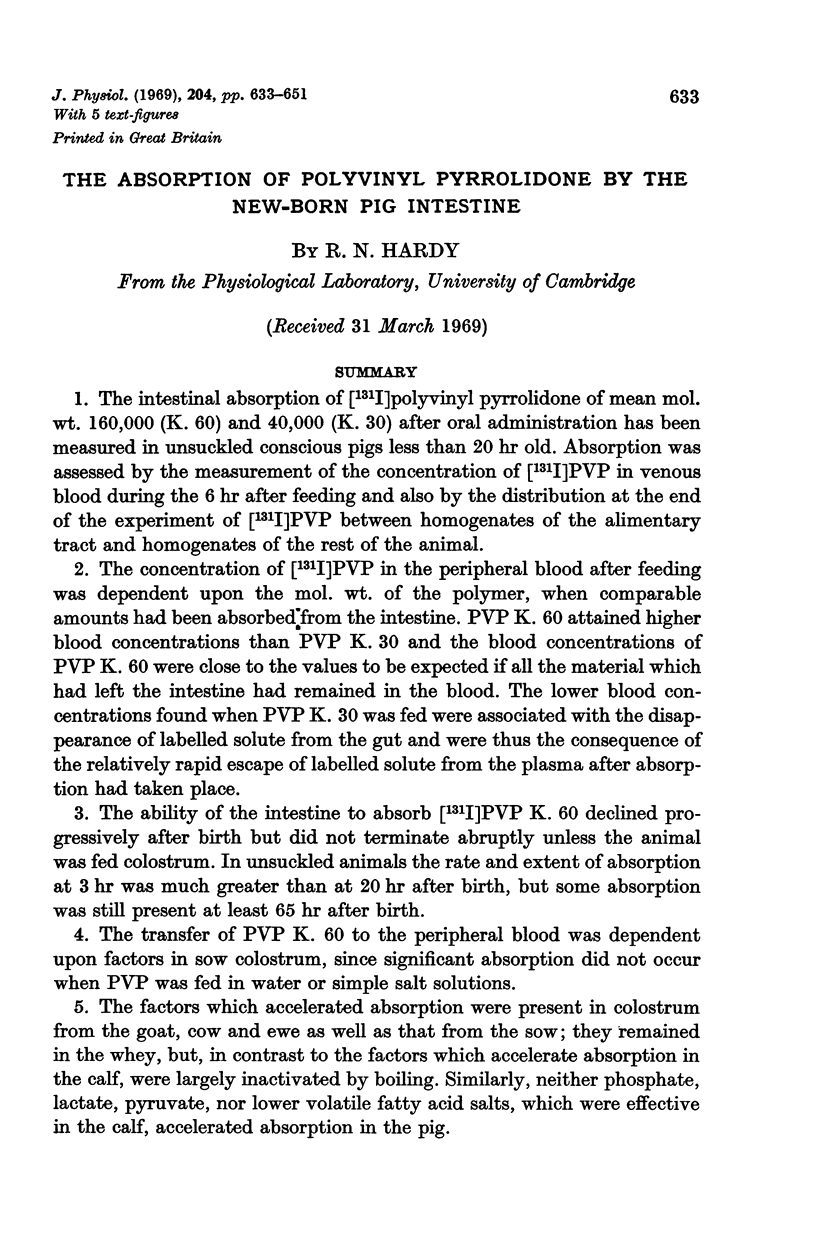
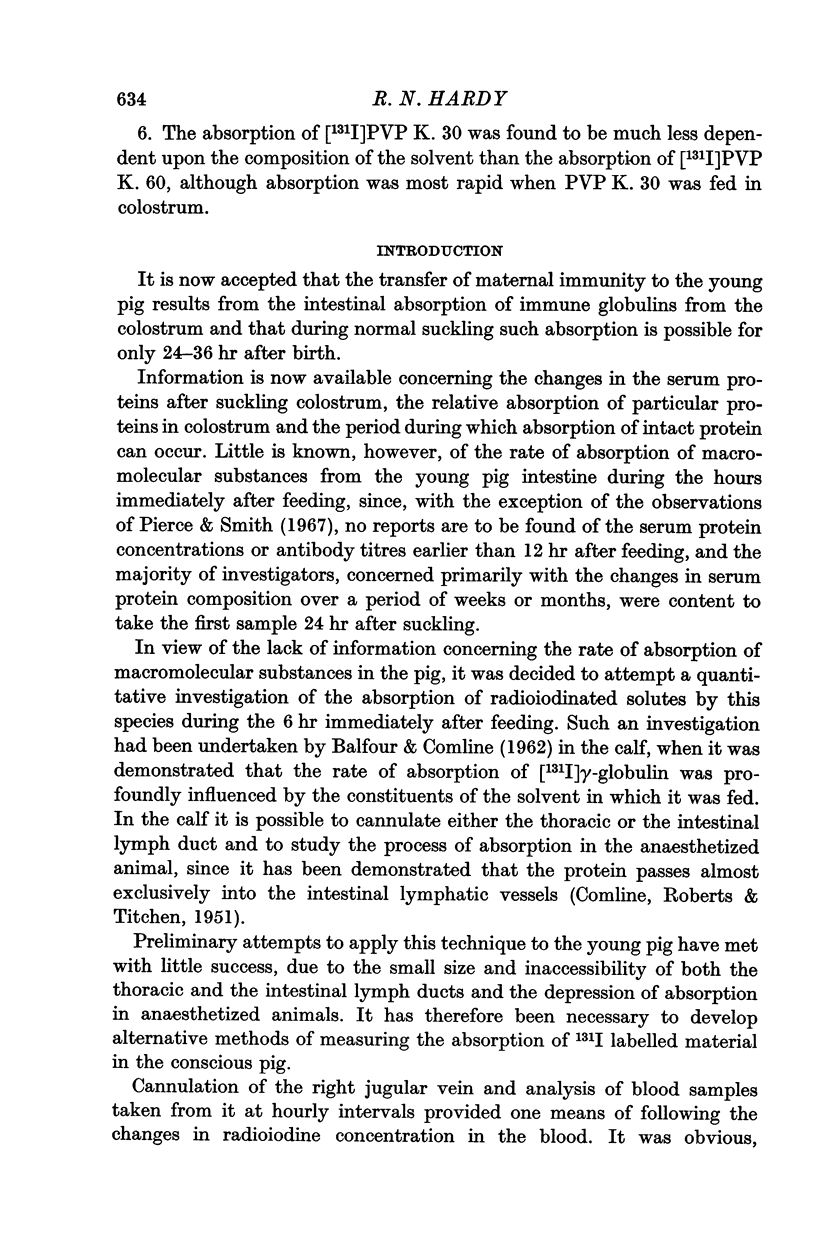
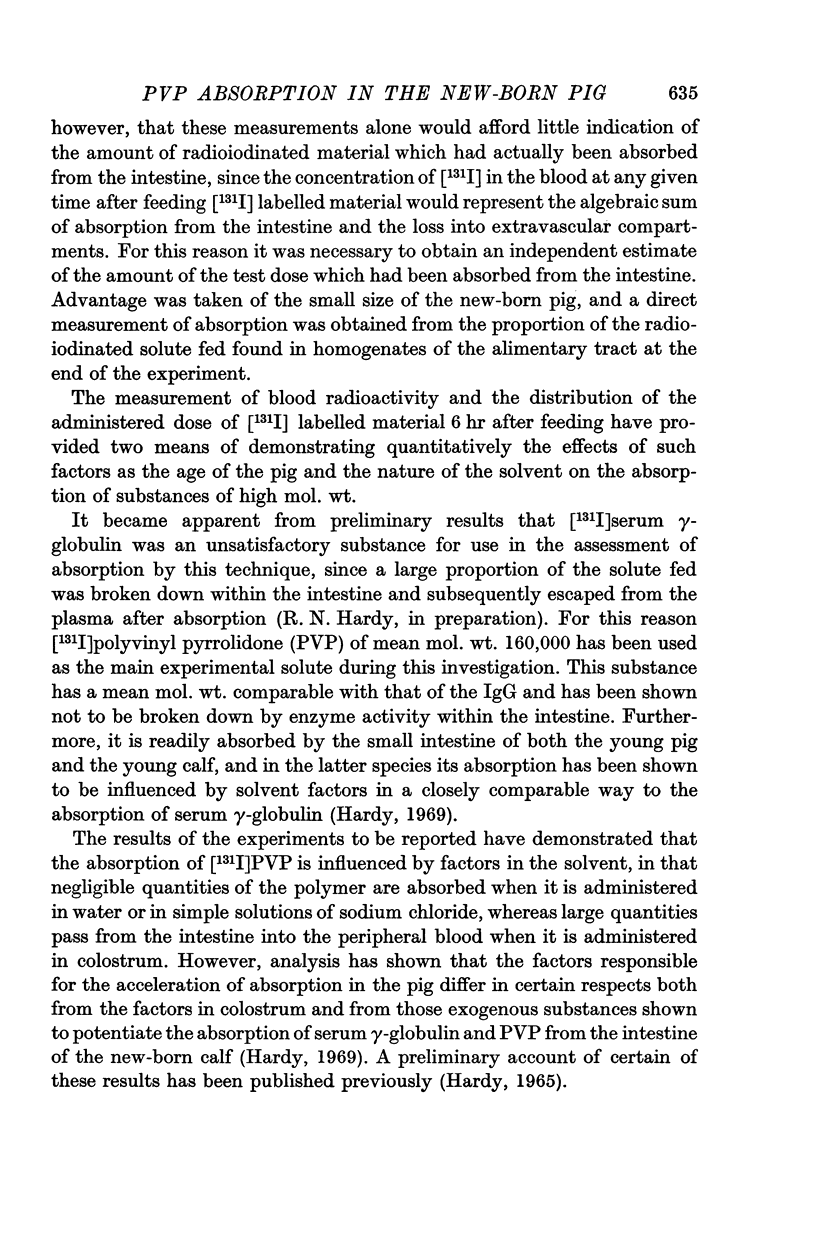
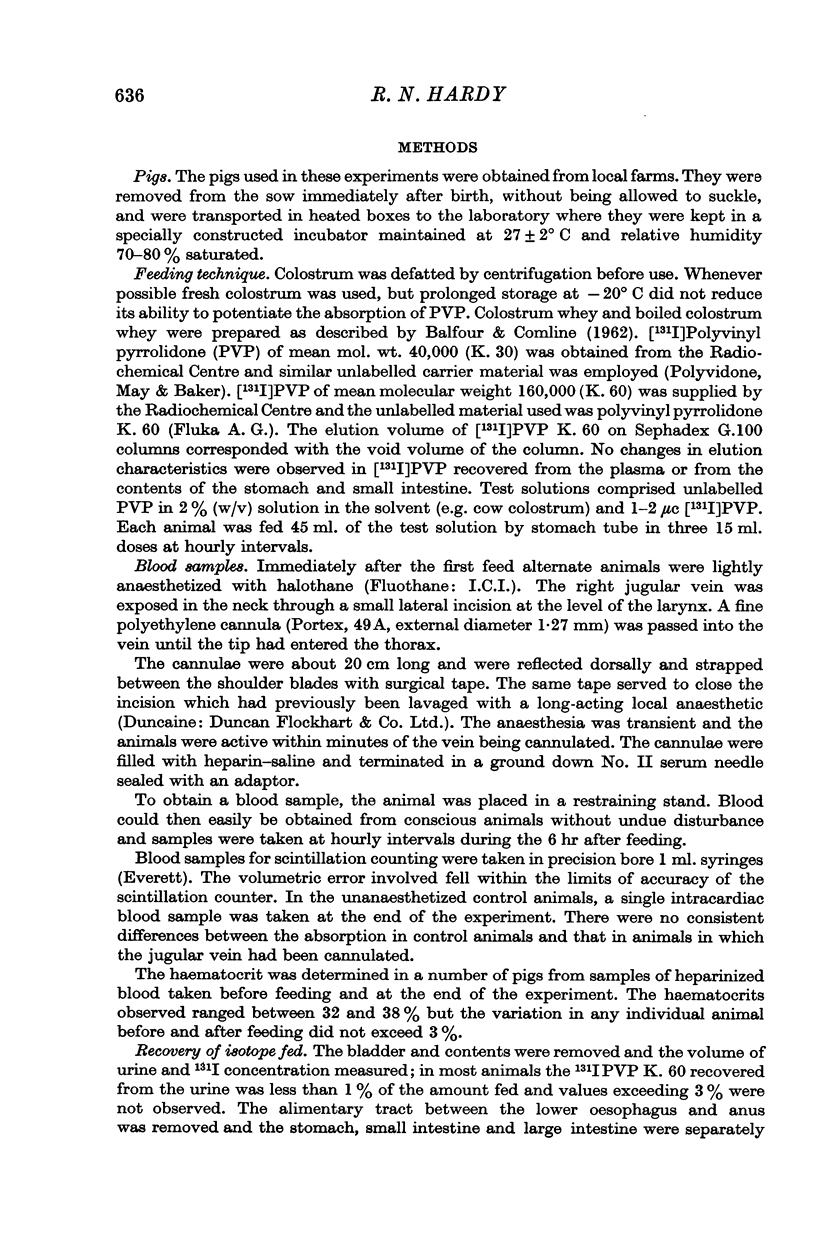
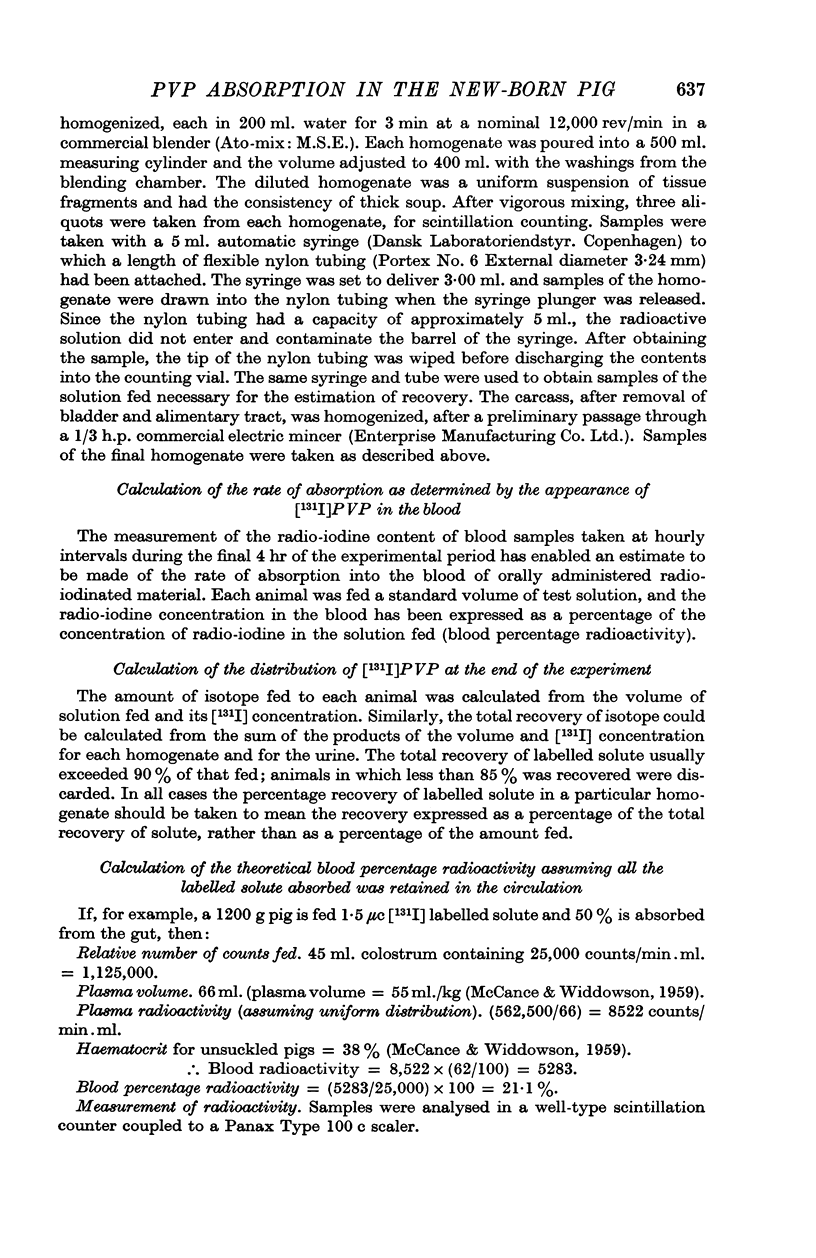
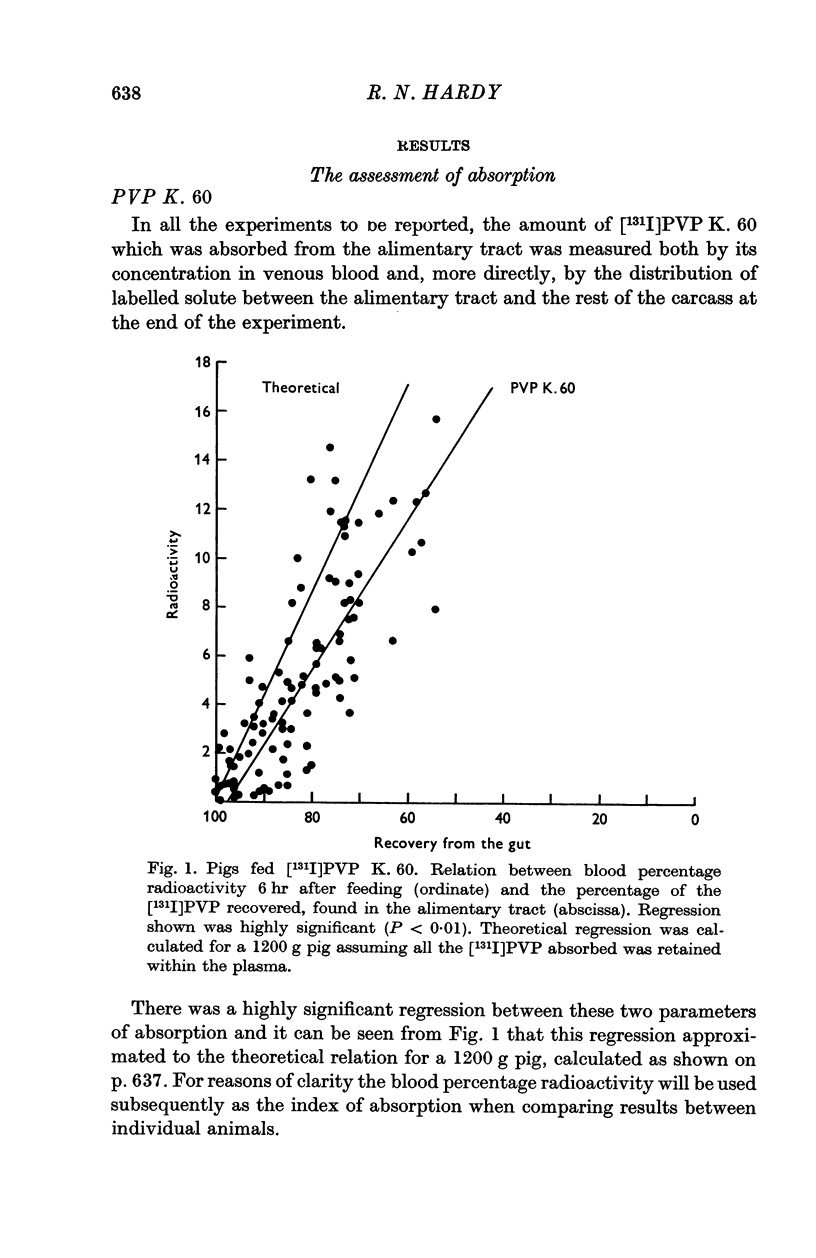
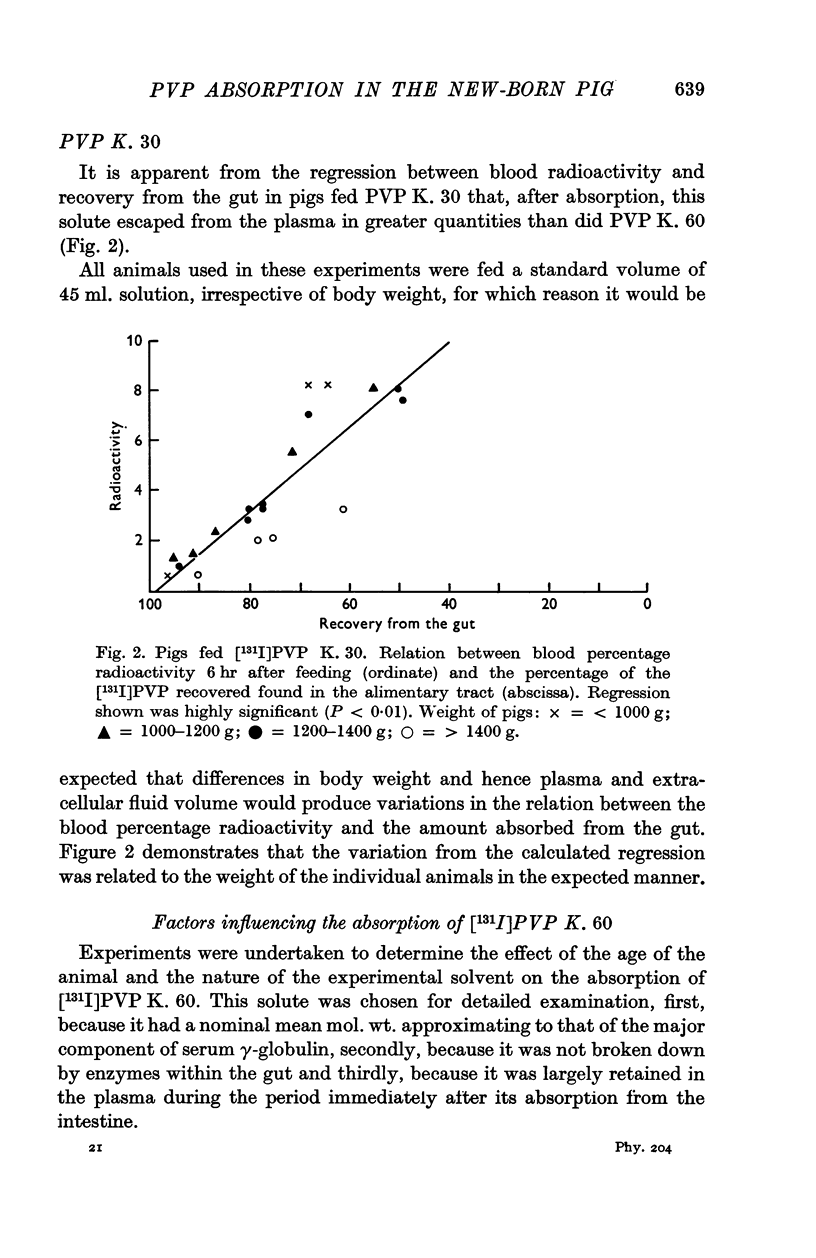
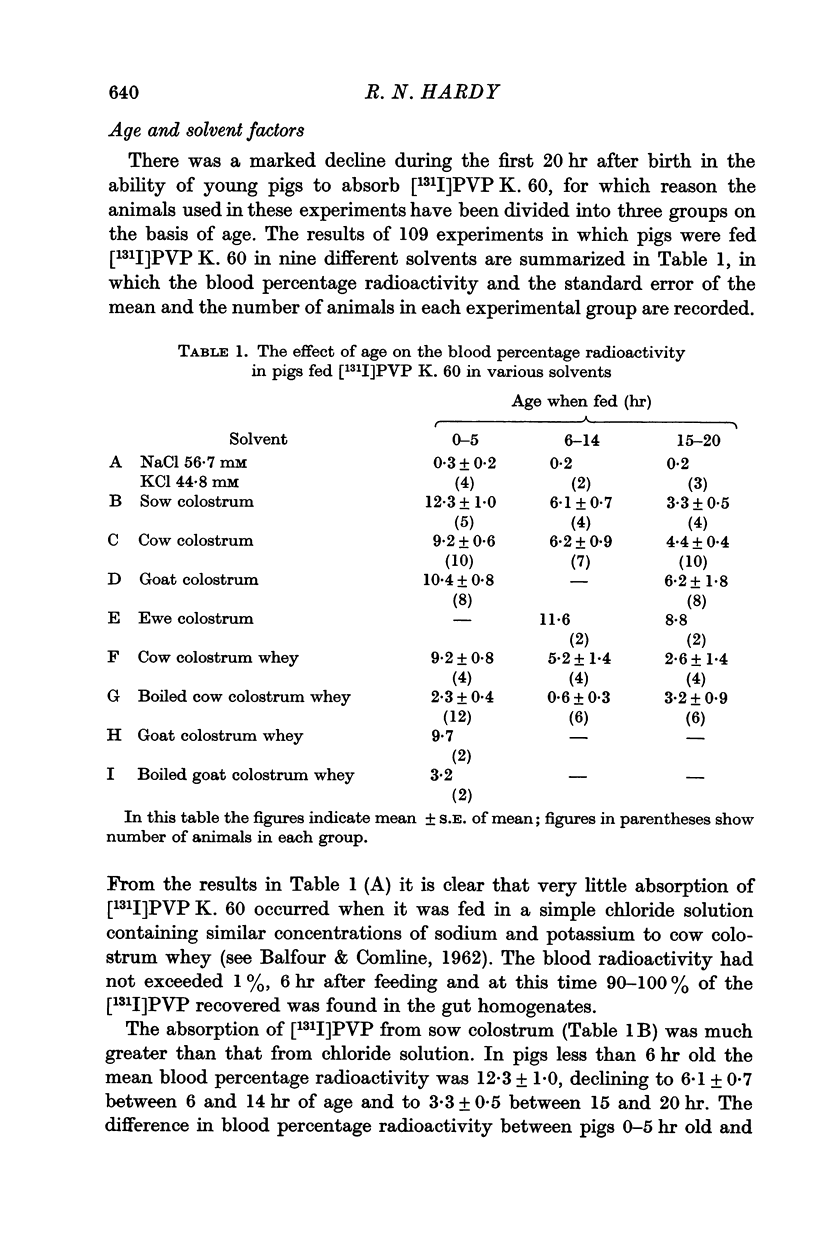
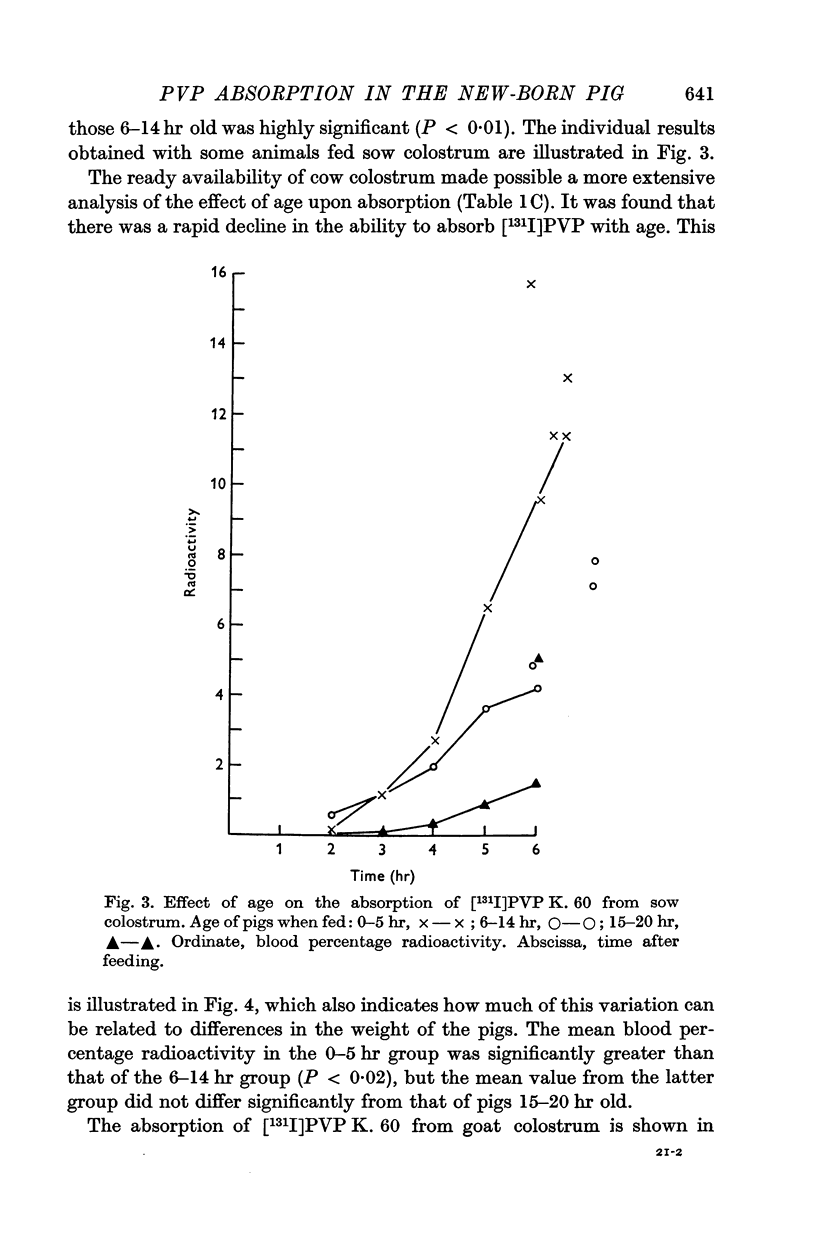
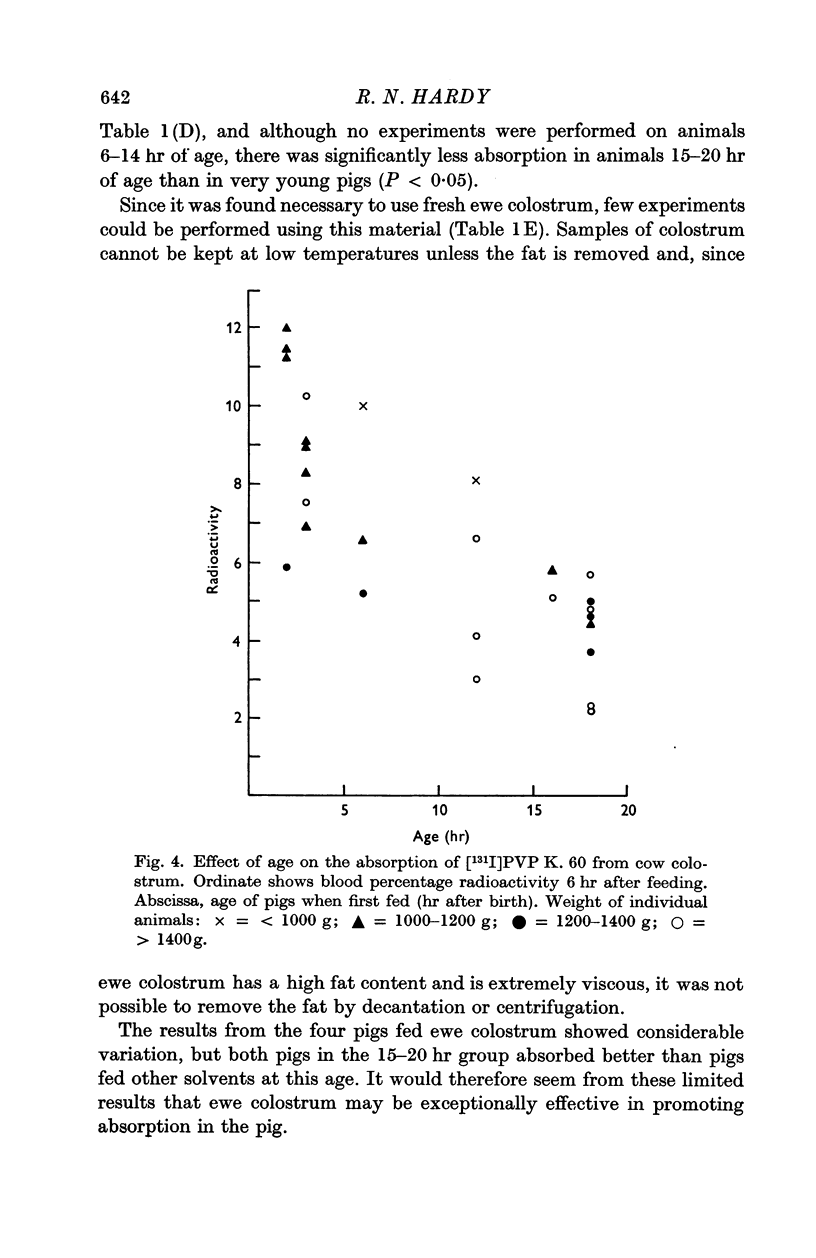
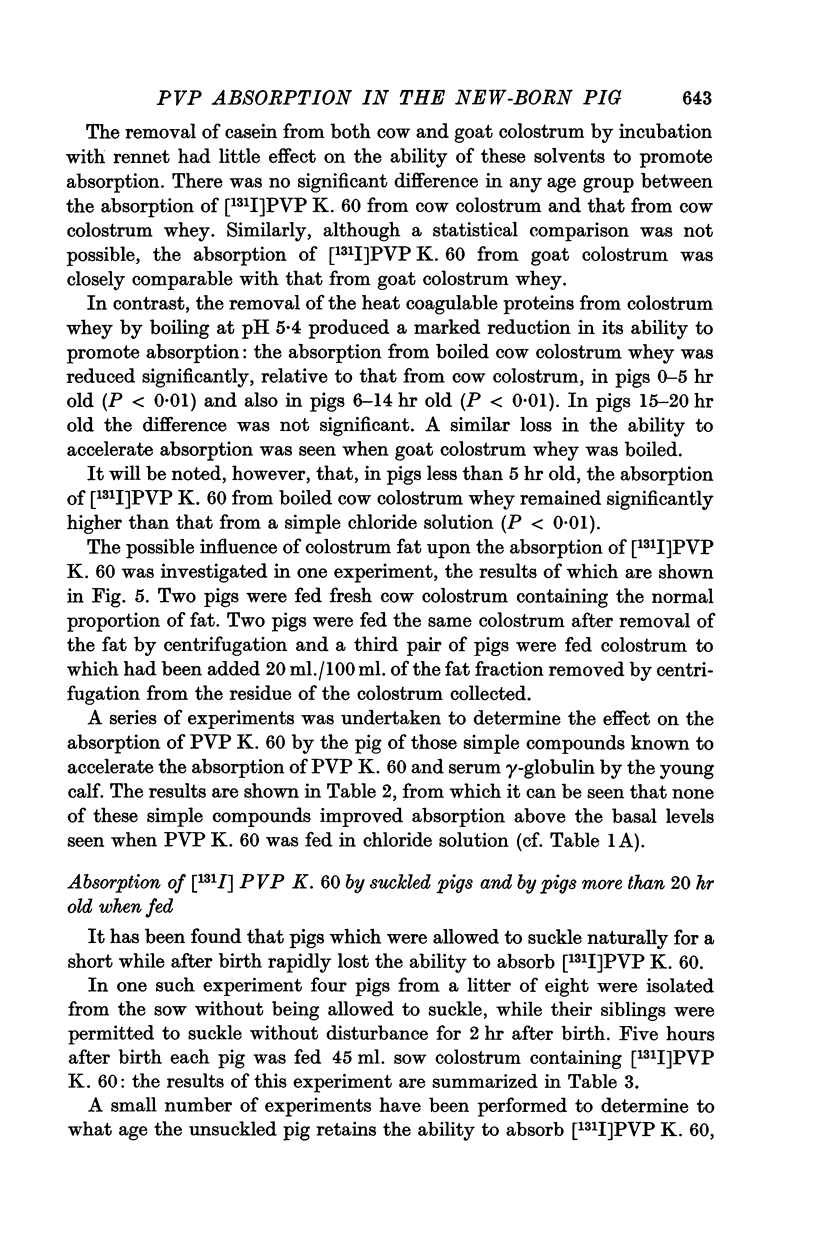
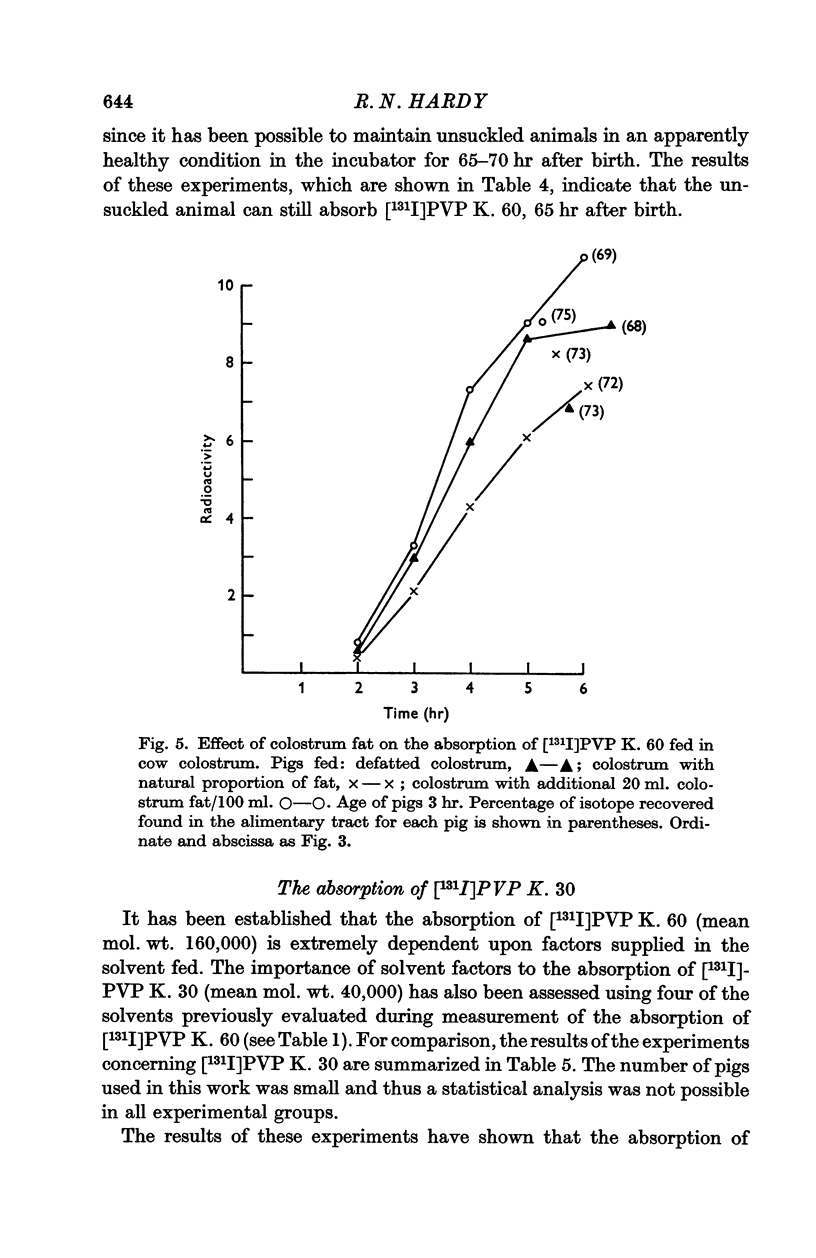
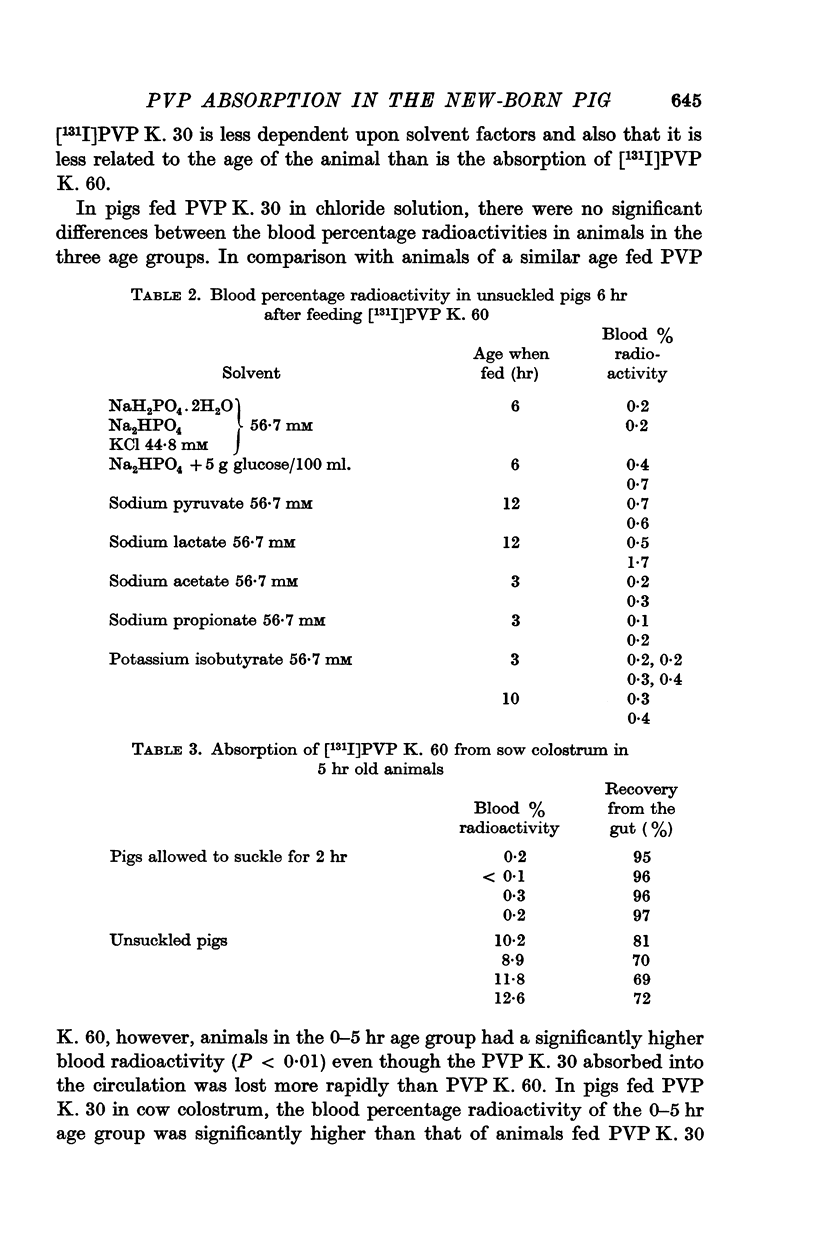
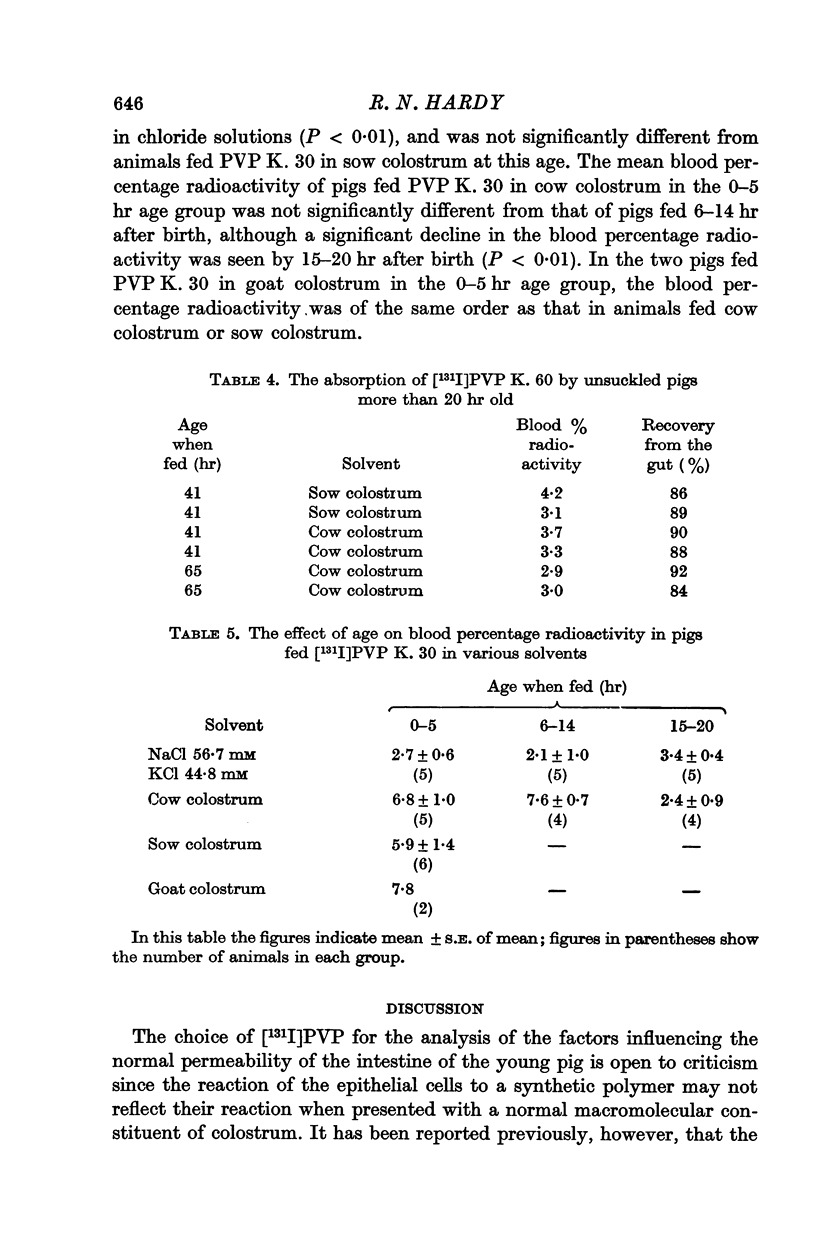
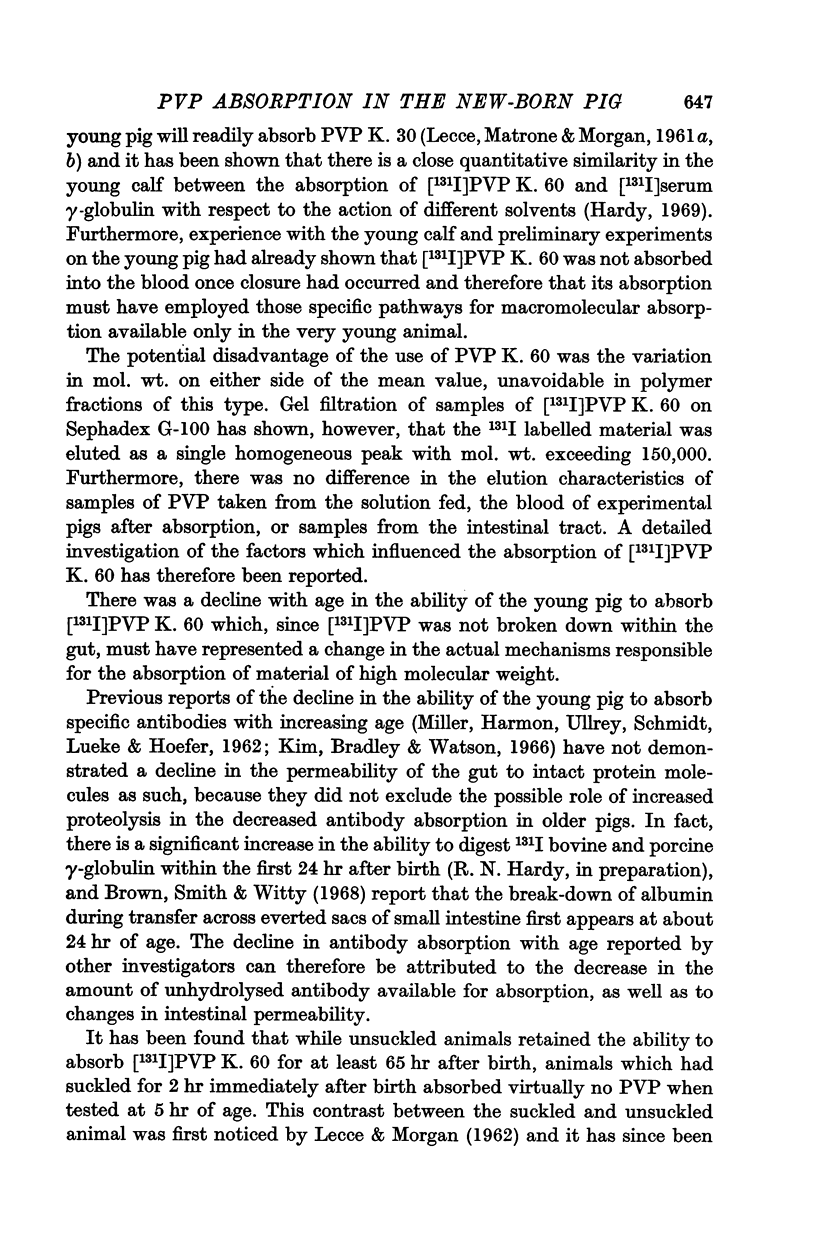

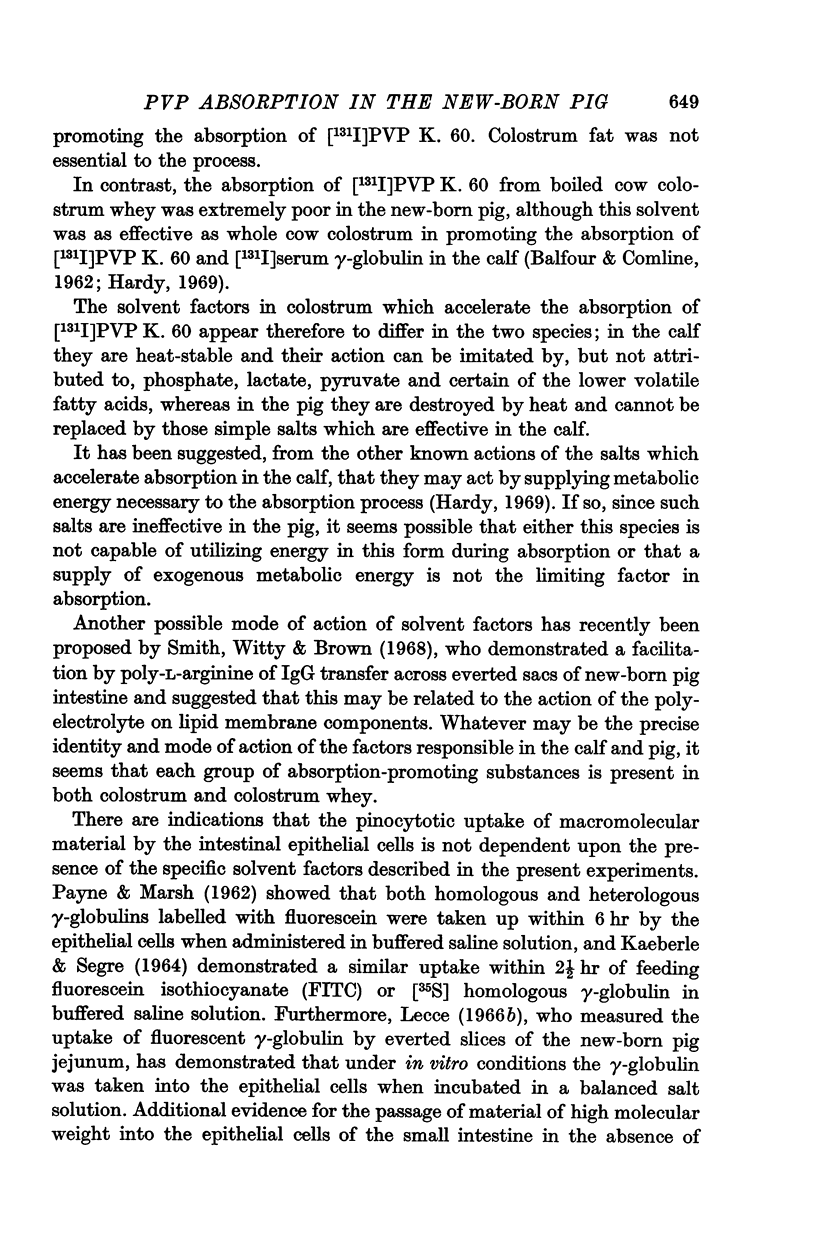
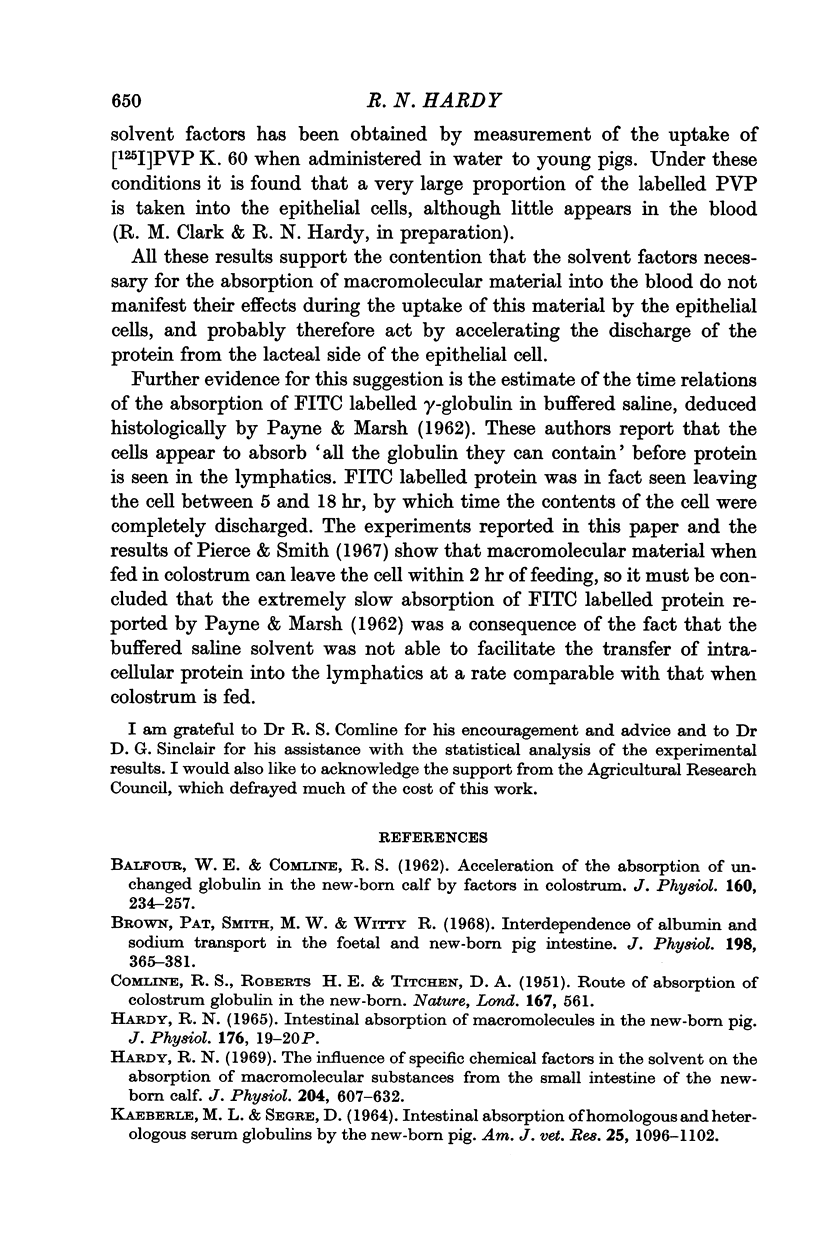
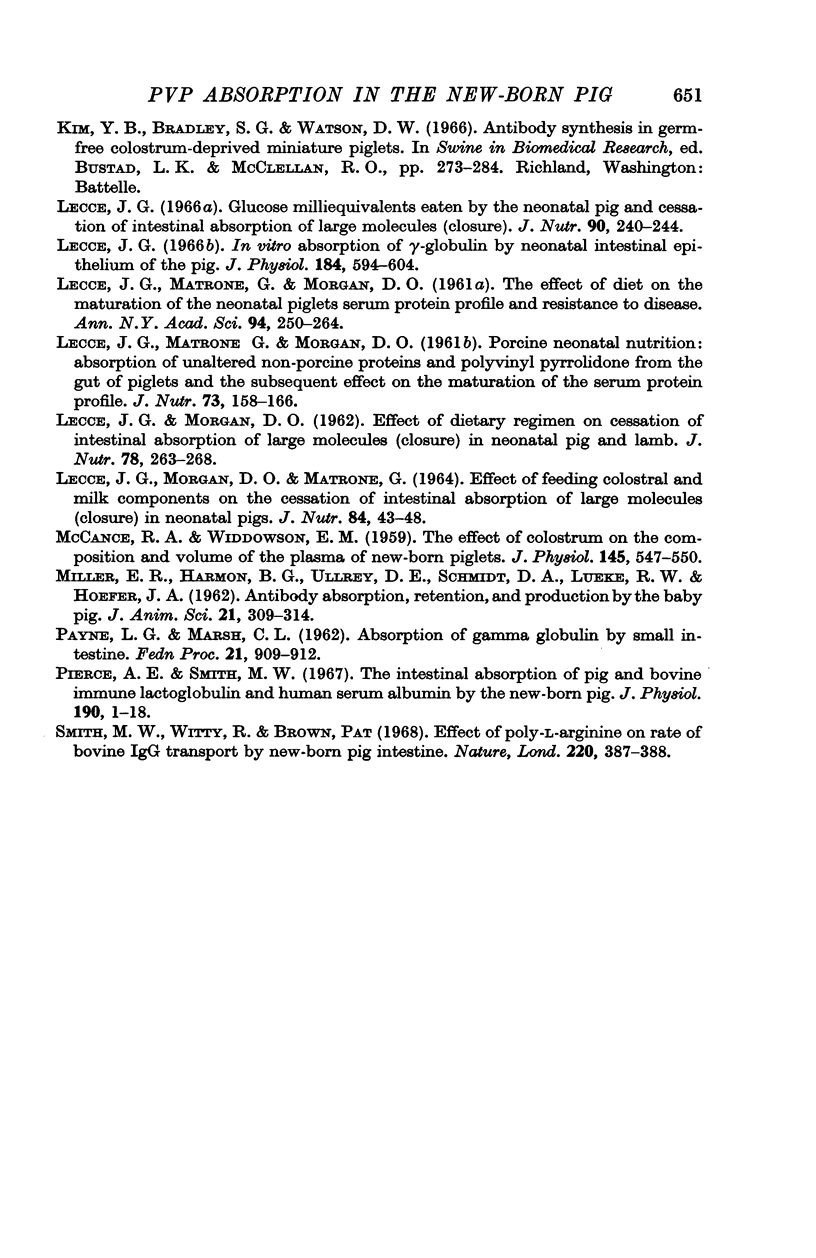
Selected References
These references are in PubMed. This may not be the complete list of references from this article.
- Brown P., Smith M. W., Witty R. Interdependence of albumin and sodium transport in the foetal and new-born pig intestine. J Physiol. 1968 Sep;198(2):365–381. doi: 10.1113/jphysiol.1968.sp008612. [DOI] [PMC free article] [PubMed] [Google Scholar]
- COMLINE R. S., ROBERTS H. E., TITCHEN D. A. Route of absorption of colostrum globulin in the newborn animal. Nature. 1951 Apr 7;167(4249):561–562. doi: 10.1038/167561a0. [DOI] [PubMed] [Google Scholar]
- Hardy R. N. The influence of specific chemical factors in the solvent on the absorption of macromolecular substances from the small intestine of the new-born calf. J Physiol. 1969 Oct;204(3):607–632. doi: 10.1113/jphysiol.1969.sp008935. [DOI] [PMC free article] [PubMed] [Google Scholar]
- KAEBERIE M. L., SEGRE D. INTESTINAL ABSORPTION OF HOMOLOGOUS AND HETEROLOGOUS SERUM GLOBULINS BY THE NEWBORN PIG. Am J Vet Res. 1964 Jul;25:1096–1102. [PubMed] [Google Scholar]
- LECCE J. G., MATRONE G., MORGAN D. O. The effect of diet on the maturation of the neonatal piglet's serum protein profile and resistance to disease. Ann N Y Acad Sci. 1961 Aug 31;94:250–264. doi: 10.1111/j.1749-6632.1961.tb35545.x. [DOI] [PubMed] [Google Scholar]
- LECCE J. G., MORGAN D. O. Effect of dietary regimen on cessation of intestinal absorption of large molecules (closure) in the neonatal pig and lamb. J Nutr. 1962 Nov;78:263–268. doi: 10.1093/jn/78.3.263. [DOI] [PubMed] [Google Scholar]
- LECCE J. G., MORGAN D. O., MATRONE G. EFFECT OF FEEDING COLOSTRAL AND MILK COMPONENTS ON THE CESSATION OF INTESTINAL ABSORPTION OF LARGE MOLECULES (CLOSURE) IN NEONATAL PIGS. J Nutr. 1964 Sep;84:43–48. doi: 10.1093/jn/84.1.43. [DOI] [PubMed] [Google Scholar]
- Lecce J. G. Glucose milliequivalents eaten by the neonatal pig and cessation of intestinal absorption of large molecules (closure). J Nutr. 1966 Nov;90(3):240–244. doi: 10.1093/jn/90.3.240. [DOI] [PubMed] [Google Scholar]
- Lecce J. G. In vitro absorption of gamma-globulin by neonatal intestinal epithelium of the pig. J Physiol. 1966 Jun;184(3):594–604. doi: 10.1113/jphysiol.1966.sp007933. [DOI] [PMC free article] [PubMed] [Google Scholar]
- McCANCE R. A., WIDDOWSON E. M. The effect of colostrum on the composition and volume of the plasma of new-born piglets. J Physiol. 1959 Mar 12;145(3):547–550. doi: 10.1113/jphysiol.1959.sp006160. [DOI] [PMC free article] [PubMed] [Google Scholar]
- PAYNE L. C., MARSH C. L. Absorption of gamma globulin by the small intestine. Fed Proc. 1962 Nov-Dec;21:909–912. [PubMed] [Google Scholar]
- Pierce A. E., Smith M. W. The intestinal absorption of pig and bovine immune lactoglobulin and human serum albumin by the new-born pig. J Physiol. 1967 May;190(1):1–18. doi: 10.1113/jphysiol.1967.sp008189. [DOI] [PMC free article] [PubMed] [Google Scholar]
- Smith M. W., Witty R., Brown P. Effect of poly-L-arginine on rate of bovine IgG transport by newborn pig intestine. Nature. 1968 Oct 26;220(5165):387–388. doi: 10.1038/220387a0. [DOI] [PubMed] [Google Scholar]


